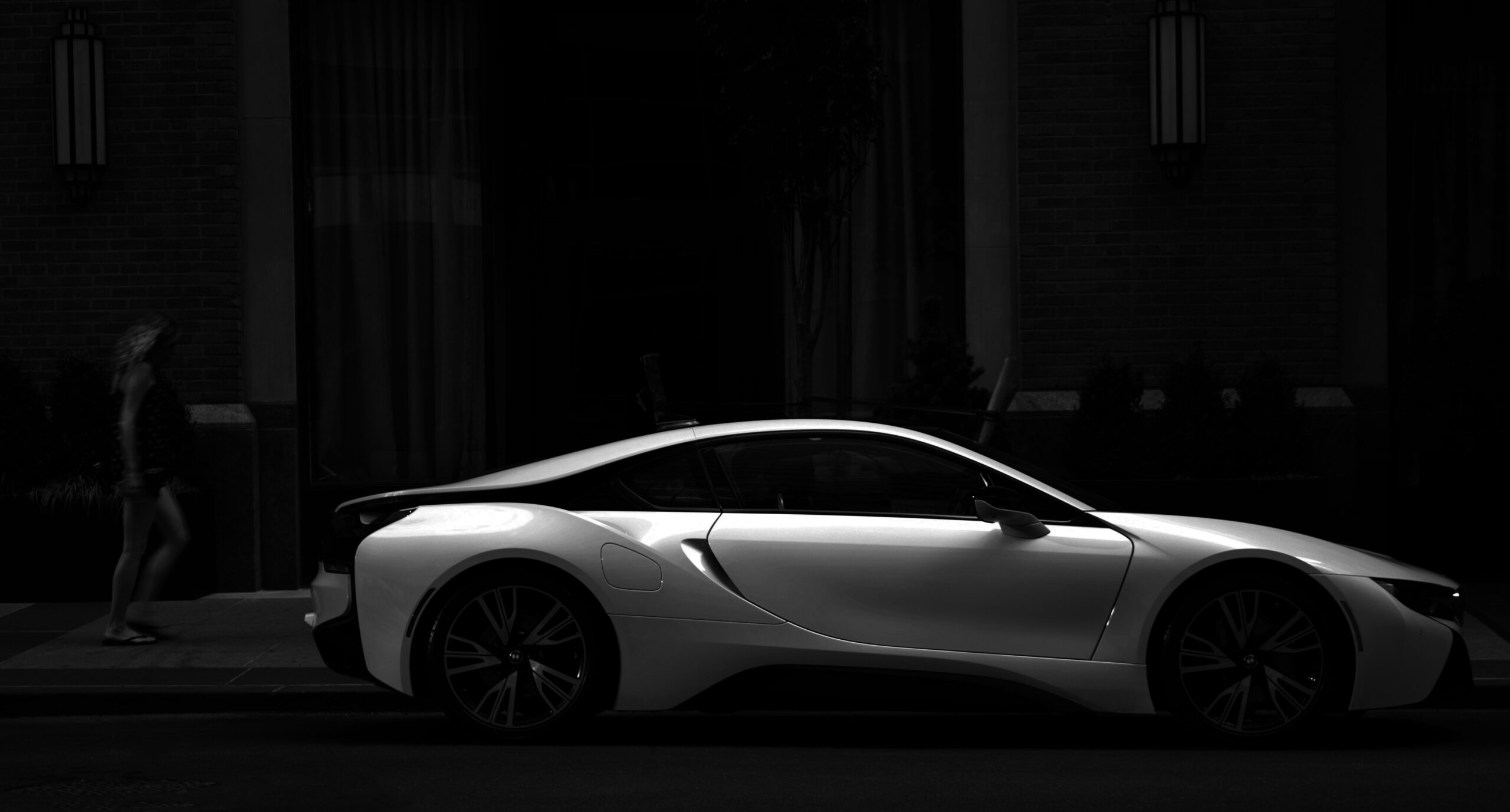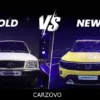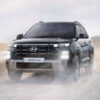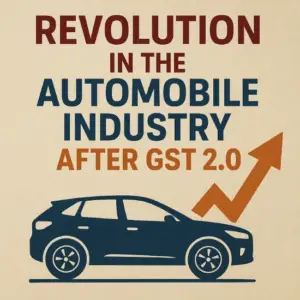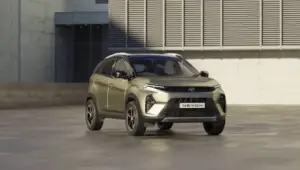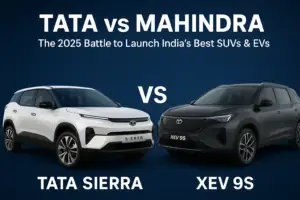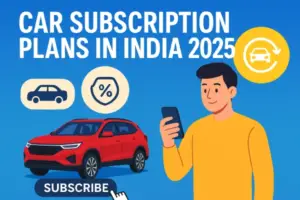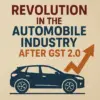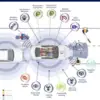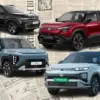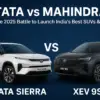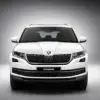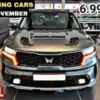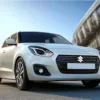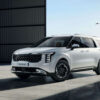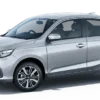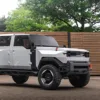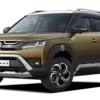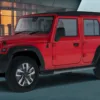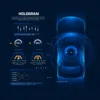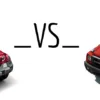
Introduction to Bharat Expo 2025
Bharat Expo 2025 stands as a pivotal event in the global automotive industry, showcasing the latest advancements in car manufacturing and technology. Scheduled to take place in the bustling city of New Delhi, this expo is anticipated to attract a diverse array of participants, including automakers, industry experts, and automotive enthusiasts from around the globe.
The event plays a crucial role in facilitating interaction among stakeholders in the automotive sector, thereby promoting innovation and collaboration for future developments.
As the automotive landscape evolves, Bharat Expo 2025 aims to highlight key trends and innovations that are shaping the future of transportation.
Attendees can expect to see an array of cutting-edge vehicles that incorporate state-of-the-art technology, sustainable practices, and enhancements in safety features. Trends such as electric vehicle (EV) development, autonomous driving, and smart connectivity are gaining momentum, and the expo will serve as a platform for companies to present their latest offerings that align with these themes.
Furthermore, Bharat Expo 2025 is expected to witness substantial attendance, showcasing a variety of exhibitors and participants eager to present their innovative designs and technologies.
Industry leaders will share insights, making it an invaluable opportunity for networking, knowledge sharing, and exploring the industry’s trajectory.
The focus will not only be on new car launches but also on discussions related to consumer expectations and the future direction of the automotive market.
In essence, this expo will underscore the integrative approach within the automotive sector, reflecting how innovation and sustainability are becoming intertwined within car manufacturing practices.
With the automotive industry in a constant state of evolution, Bharat Expo 2025 stands as an important event to monitor and assess the emerging trends that are likely to shape the future of mobility.
Tech Trends: The Rise of Electric Vehicles and Hybrid Models
The automotive landscape is undergoing a significant transformation with the proliferation of electric vehicles (EVs) and hybrid models, prominently featured at Bharat Expo 2025. The latest innovations reflect a concerted effort by automakers to align with global sustainability goals and adapt to increasing consumer demand for eco-friendly transportation solutions.
Electric vehicles, renowned for their zero tailpipe emissions, are gaining traction due to advancements in battery technology that enhance efficiency and range.
Among the key highlights at the expo was a showcase of state-of-the-art battery systems. Several manufacturers presented their latest models equipped with lithium-ion batteries that promise higher energy densities and faster charging times. For instance, the introduction of solid-state batteries represents a significant leap forward, potentially increasing the range of electric vehicles and reducing the risk of overheating compared to traditional lithium-ion batteries. As automakers compete to set industry standards, the emphasis on improved energy storage solutions is crucial for broader EV adoption.
Charging infrastructure is another critical factor influencing the rise of electric and hybrid models. The expo featured several companies demonstrating innovative charging technologies, including ultra-fast chargers that can replenish an EV’s battery within minutes.
Moreover, partnerships between automotive brands and tech firms aim to expand the availability of charging stations, addressing one of the primary concerns for prospective EV buyers—range anxiety.
It is evident that the synergy between vehicle manufacturers and infrastructure developers is essential for fostering an environment conducive to the growth of electric mobility.
In addition to advancements in battery efficiency and charging options, many hybrid models displayed at the event showcased sophisticated energy management systems. These systems optimize the balance between electric and gasoline power, improving fuel efficiency and reducing overall emissions. As automakers innovate to create a seamless driving experience while minimizing environmental impact, the trend toward electric and hybrid vehicles is here to stay, reflecting a broader commitment to sustainable transportation solutions.
Safety Features: A Comparison of Standard and Advanced Safety Systems
As the automotive industry continues to evolve, safety features in newly launched vehicles are gaining significant attention, particularly at events like Bharat Expo 2025. Standard safety measures have long included essential components such as airbags, anti-lock braking systems (ABS), and electronic stability control (ESC). These foundational features are designed to protect occupants during crashes and enhance vehicle control under challenging driving conditions. Most manufacturers ensure these standard safety elements are present across their lineup, ensuring a baseline level of protection for consumers.
However, the landscape of automotive safety is rapidly advancing with the introduction of cutting-edge technologies. Among these innovations, automatic emergency braking (AEB) stands out, enabling vehicles to detect potential collisions and apply brakes autonomously if the driver does not react in time. This feature significantly reduces the likelihood of rear-end accidents, showcasing a promising enhancement to vehicle safety.
Another notable advancement is adaptive cruise control (ACC), which allows vehicles to maintain a set speed while automatically adjusting to the speed of the vehicle ahead. This technology not only eases driver fatigue during long journeys but also contributes to maintaining safe distances between vehicles, thereby lowering the risk of accidents. Lane-keeping assist (LKA) is yet another innovative feature that actively helps drivers stay within their lane, further promoting road safety.
Different manufacturers are at various stages of implementing these advanced safety features. For instance, some luxury brands may incorporate these systems as standard, while others may offer them as optional packages in their more affordable models. This disparity raises questions about accessibility and the future of safety standardization across the automotive market. As innovation continues to drive the industry, the comparison of standard and advanced safety systems remains crucial for informed consumer choices.
Infotainment Systems: Connectivity and User Experience
The infotainment systems present in the newly launched car models at Bharat Expo 2025 showcase significant advancements in user interface design and connectivity options. Modern drivers expect seamless integration of technology with their vehicles, making the infotainment system a crucial aspect of the driving experience.
This section analyzes how various brands have embraced innovations in this area, specifically focusing on features like Apple CarPlay, Android Auto, voice recognition, and touchscreen interfaces.
Many manufacturers are prioritizing user experience by offering intuitive touchscreen displays that resemble smartphones and tablets. These touchscreens range from 7 to 15 inches and provide high-resolution graphics and responsive navigation. Additionally, brands like XYZ Motors and ABC Automotive capably redefine interaction by integrating voice recognition technology. This allows drivers to control features such as navigation, music playback, and phone calls without the need to take their hands off the wheel or their eyes off the road, significantly enhancing safety.
Connectivity options play a vital role in elevating the user experience. A wide array of options, including Bluetooth, Wi-Fi, and USB ports, are standard across many new models. The incorporation of Apple CarPlay and Android Auto has bridged the gap between mobile devices and car systems, enabling users to access their apps, playlists, and contact lists directly through the vehicle’s infotainment screen. This seamless transfer ensures that drivers remain connected while enjoying a personalized journey.
Moreover, a comparative analysis between brands reveals distinct approaches in balancing functionality with aesthetics. Some car manufacturers focus on minimalistic designs to reduce distractions, while others incorporate extensive information displays to provide comprehensive insights about vehicle performance and navigation. Ultimately, the innovations in infotainment systems at Bharat Expo 2025 reflect a commitment to enhancing connectivity and ensuring that user experience remains a priority across various brands.
Interior Comfort and Customization: A New Level of Luxury
The automotive industry continuously evolves, with manufacturers striving to elevate the driving experience through innovative interior designs and customization options. At the Bharat Expo 2025, numerous brands showcased features that redefine luxury by enhancing interior comfort. The discussion around materials used in car interiors is particularly noteworthy, as brands are increasingly opting for premium, sustainable materials such as recycled leather, organic cotton, and advanced composites. These materials not only provide aesthetic appeal but also ensure durability and ease of maintenance, contributing significantly to the overall luxurious impression.
Seating arrangements have transformed, with an emphasis on ergonomics and adjustability. Several manufacturers presented models equipped with not only heated and cooled seats but also a range of custom seating positions that cater to individual preferences. This focus facilitates long journeys by prioritizing passenger comfort and reducing fatigue. Some brands even introduced massage functions in premium models, further enhancing the sense of luxury by offering a spa-like experience during commutes.
Space optimization emerged as a significant element, with several vehicles featuring innovative solutions to maximize cabin space. Designs that incorporate modular seating configurations or adjustable storage compartments allow for greater versatility, enabling occupants to adapt the interior to their needs. Additionally, clever use of lighting and sound insulation contributes to a serene environment that encapsulates modern luxury, making every ride pleasant and enjoyable.
Customization plays a crucial role in modern vehicle design, with brands providing an array of options that allow buyers to tailor the interior to their preferences. From selecting unique color palettes to choosing different upholstery options, the ability to personalize the driving environment increases the connection between the driver and the vehicle, reinforcing the feeling of luxury and individuality. The innovations presented at Bharat Expo 2025 clearly indicate a committed shift towards achieving the ultimate in interior comfort and customization.
Performance and Engine Options: Power and Efficiency Metrics
The performance and engine options of newly launched cars showcased at Bharat Expo 2025 reflect a substantial evolution in automotive technology. Manufacturers are increasingly adopting a diverse array of engine types to cater to varying consumer preferences and compliance with environmental regulations. The options range from traditional internal combustion engines (ICE) to hybrid and fully electric powertrains, each presenting unique advantages in terms of horsepower and fuel efficiency.
Noteworthy among the engine offerings are turbocharged gasoline engines that provide enhanced horsepower while promoting fuel efficiency. These variants allow for a more agile performance, making them suitable for consumers who prioritize speed and responsiveness in urban settings. For instance, one model features a 2.0-liter turbo engine capable of delivering 250 horsepower, enabling rapid acceleration without compromising mileage, achieving approximately 30 miles per gallon (mpg) on highways.
In contrast, diesel engines continue to hold appeal for consumers seeking superior torque and fuel economy. With advancements in technology, modern diesel options promise longevity and reliability, achieving between 35 to 40 mpg, appealing particularly to drivers who cover long distances regularly. Additionally, manufacturers are now focusing on making diesel engines cleaner and more efficient to meet stricter emission standards.
Hybrid options represent another compelling segment, combining gasoline engines with electric motors. This configuration not only improves fuel efficiency significantly but also enhances torque delivery, making it beneficial for both city commuting and highway cruising. A prime example is a newly released hybrid model that achieves an impressive 60 mpg, catering to environmentally conscious consumers without sacrificing performance.
Finally, electric vehicles (EV) are gaining traction at the expo with battery technology advancements that provide improved range and quicker charging times. EV models are particularly attractive to urban consumers, offering maintenance savings and zero emissions. Overall, the variety of engine options and performance metrics presented at Bharat Expo 2025 demonstrates a comprehensive approach to meet the diverse preferences of modern car buyers.
Pricing Trends and Market Positioning
The pricing strategies employed by car manufacturers significantly influence their market positioning and consumer perception, particularly evident during the Bharat Expo 2025 where numerous newly launched cars were showcased. Analyzing the pricing trends of these models reveals a sophisticated interplay between production costs, consumer demand, and competitive dynamics. Manufacturers are increasingly leveraging advanced technologies and innovations in automotive engineering, which, while elevating the overall quality of their vehicles, also impacts their pricing significantly.
When comparing the pricing of these newly launched cars with similar models, it becomes apparent that manufacturers adopt various strategies to distinguish themselves in a crowded marketplace. For instance, some brands may position their vehicles as premium offerings, employing a higher price point to suggest superior quality and advanced features. In contrast, other manufacturers may choose a more value-oriented approach, emphasizing affordability while still maintaining competitive capabilities. This diversification in pricing strategies not only caters to different consumer segments but also enhances brand recognition and loyalty.
Furthermore, there are several factors that influence the pricing of newly launched cars at Bharat Expo 2025. Market trends such as economic conditions, consumer purchasing power, and shifts in consumer preferences towards electric and hybrid vehicles are paramount. Additionally, external costs, including tariffs, supply chain disruptions, and fluctuating material costs, also play a crucial role. Manufacturers must carefully consider these elements to effectively position their models within the competitive landscape.
Ultimately, understanding the pricing strategies and market positioning of the newly launched cars at Bharat Expo 2025 offers valuable insights into the automotive industry’s evolving landscape. This analysis highlights not only the factors influencing pricing but also the strategic responses of manufacturers to consumer expectations, ultimately shaping their competitive advantage in the market.
Environmental Impact: Emission Standards and Compliance
As the automotive industry grapples with the pressing challenges of climate change, manufacturers are increasingly focused on meeting stringent emission standards. The Bharat Expo 2025 serves as an important platform for showcasing how various car makers are responding to these challenges, particularly concerning their carbon footprints. Notably, many companies are aligning their strategies with both local and global regulatory frameworks aimed at reducing greenhouse gas emissions.
One of the primary objectives for manufacturers in attendance is compliance. Regulatory bodies in India and worldwide have set ambitious targets for reducing emissions from new vehicles.
To meet these requirements, companies are investing in advanced technologies such as electric and hybrid drivetrains that offer a significant reduction in carbon emissions compared to traditional internal combustion engines.
Numerous models showcased at the expo feature innovative powertrains that promise to deliver better fuel efficiency and lower emissions.
Additionally, several manufacturers are adopting unique initiatives designed to further shrink their carbon footprints. For instance, some are exploring eco-friendly materials for vehicle manufacturing and focusing on sustainable production processes. Many carmakers are also implementing robust recycling programs aimed at minimizing waste throughout the vehicle life cycle. By doing so, they not only comply with emission targets but also contribute positively to environmental sustainability.
Beyond mere compliance, this commitment to innovation in emissions reduction reflects a broader trend within the industry—a shift towards environmentally conscious practices. The efforts exhibited at Bharat Expo 2025 highlight the extent to which car makers are willing to adapt and innovate in response to regulatory pressures and societal expectations.
As consumers increasingly demand greener alternatives, such initiatives stand to play a pivotal role in shaping the future of automotive design and technology.
Conclusion: Key Takeaways from Bharat Expo 2025
The Bharat Expo 2025 has provided a comprehensive overview of the latest advancements in the automotive industry, showcasing a variety of innovative features in newly launched cars. This year’s exhibition highlighted several prevalent trends that are expected to redefine the landscape of automobile design and functionality in India. Among these trends, the increasing integration of advanced technology has emerged as a clear focal point.
Many manufacturers are prioritizing features such as autonomous driving assistance, enhanced infotainment systems, and improved connectivity, illustrating a shift towards a more tech-centric approach in vehicle manufacturing.
Moreover, sustainability has transitioned from being a mere buzzword to a crucial factor in automotive development.
The introduction of electric and hybrid models underscores the industry’s commitment to reducing the environmental impact of personal transportation. Innovations in battery technology were prominently displayed, promising more efficient electric vehicles that can ease the consumer’s transition towards greener options.
This emphasis on eco-friendly solutions appears to be resonating with consumers, who are increasingly concerned about environmental implications.
Furthermore, safety continues to be a priority, with manufacturers showcasing sophisticated safety features equipped in the latest models.
The advancements in collision detection systems and smart safety alerts indicate a collective move towards enhancing passenger security.
These innovations are likely to influence consumer choices significantly as buyers become more discerning about the safety credentials of their potential vehicles.
Looking ahead, the automotive industry in India is poised for transformative changes as these newly introduced features take center stage. The focus on technology, sustainability, and safety will not only attract a more varied consumer base but may also set new standards in automotive excellence.
Thus, the insights gleaned from Bharat Expo 2025 signal a promising future where innovation and consumer preferences play a pivotal role in shaping the automotive market.

